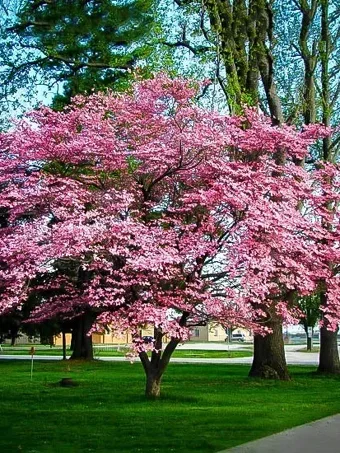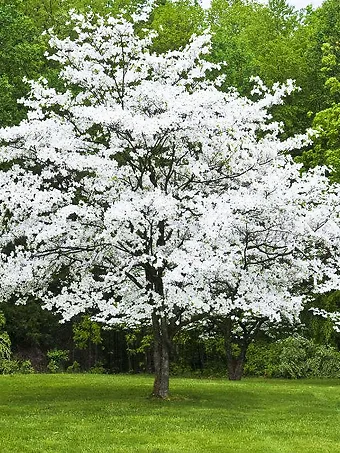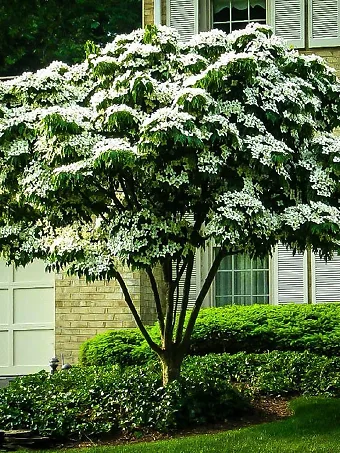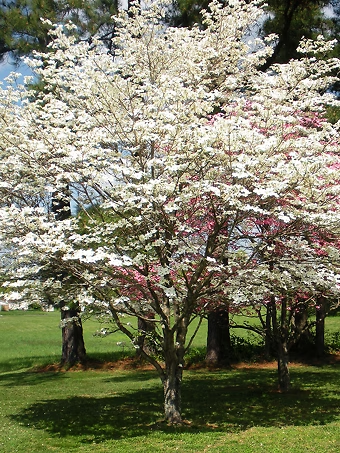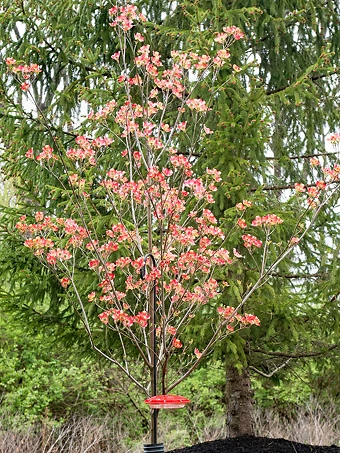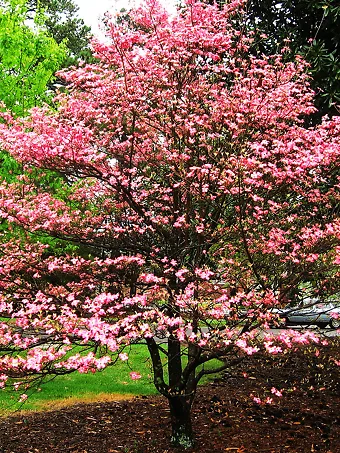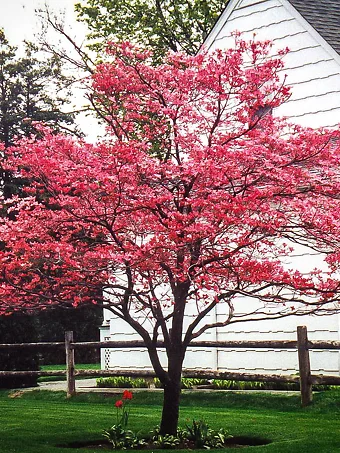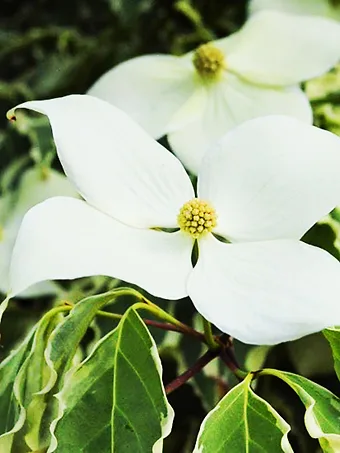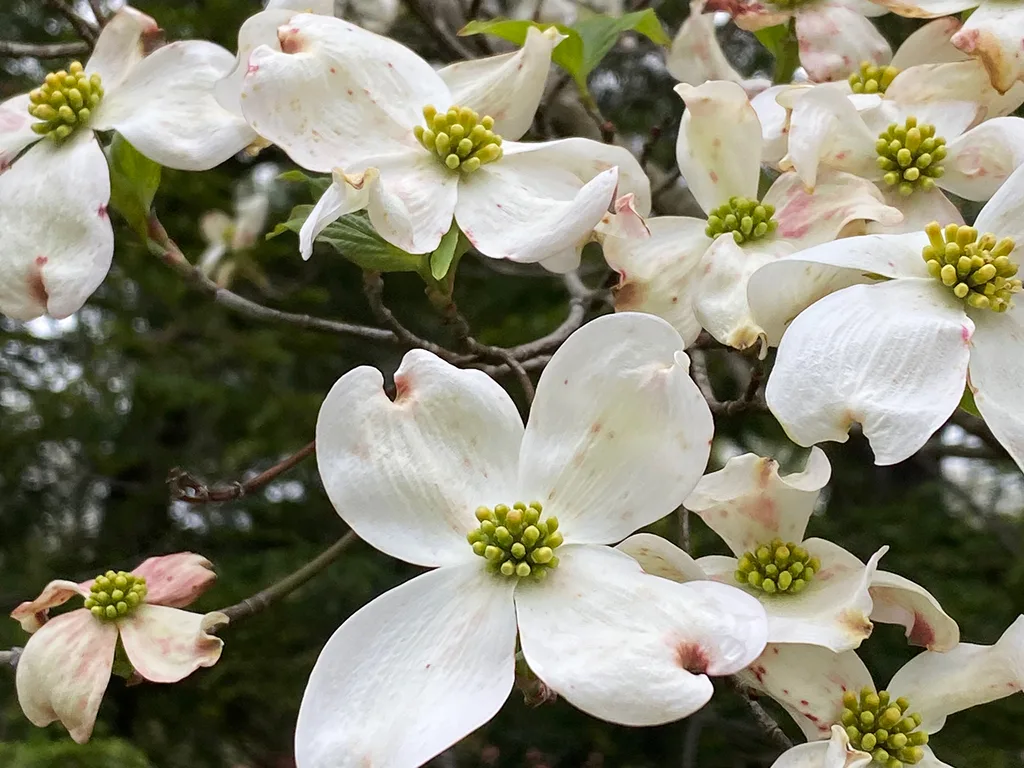
Written by s • The Killer Disease Stalking our Dogwoods
Flowering dogwood trees are a major highlight of spring and early summer throughout the east. In the woods and in gardens the glory of these trees is an annual event so glorious it should perhaps be a national holiday. Europeans admire these trees too – which to them are exotic – but at home their profusion has been damaged, and they remain threatened.
In the late 1970s gardeners in New York started reporting a problem with their flowering dogwood trees. The lower branches were dying, and within one to three years many trees died completely. In the wild, trees along highways started to show the same symptoms, and around Seattle the Pacific dogwood was showing them too (in the end the disease did not cause so much of a problem there). over the next years the disease spread among both garden trees and forest trees, and by 1991 the cause was formally identified as a new species of fungus – Discula destructiva. We still don’t know where it came from, but its simultaneous appearance around areas with major ports suggests it may be foreign.
Within 10 years the disease in the east had spread both north and south, through the Appalachians, and by the early 1990s it was reported all the way from Georgia to Vermont. In badly affected areas many thousands of wild trees died, so that 17 million acres of forest showed the disease, with 80 to 90% of dogwoods killed in some areas. Not only did this effect the look of the forest – and reduce seasonal tourism – but the absence of the fruits affected bird populations too.
It soon became clear that trees growing in mountains, above 3,000 feet, were most severely affected, as well as trees in heavier shade and drier soil. Since those years, most trees that could be killed are dead, so the disease is today much less prevalent.
Like any good story, this one has a hero. He is Professor Elwin R. Orton, Jr., a biologist and plant breeder at Rutgers University, in New Jersey. He was quick to notice that while the American flowering dogwood, Cornus florida, was being affected, the Chinese equivalent plant, Cornus kousa, was not. He began a careful breeding program, crossing selected plants of these two species together, and then nurturing the seedlings for years to make sure they remained disease-free. Unlike some new plants, which hit the market immediately, leaving gardeners to find their faults, Professor Orton studied his trees for twenty years to be sure they were resistant, before releasing them to nurseries, so we can rely on them.
Because of the care Orton took, it was the early 21st century before gardeners had a chance to avoid dogwood anthracnose by planting these hybrid trees. Most of his trees are in the ‘Stellar Series’, which names like Constellation, Celestial, or Stellar Pink. It is worth mentioning that there is another common dogwood, called ‘Milky Way’, which you might think was part of the series. It isn’t, but it doesn’t get anthracnose, since it is a selection of the Chinese dogwood, and not a hybrid at all.
Are My Trees Affected?
If you have flowering dogwood trees, then look out for the development of this disease. The first symptoms are irregular dead spots on the leaves or flowers, with purple or brown edges. These will be seen between the middle of May and the end of May. The leaves hang on the tree for some time, as the disease spreads along the branches, killing the bark. When it reaches the main stems or trunk it can spread around the trunk, killing the tree. Lower branches are affected first. While removing the branches before the disease reaches the trunk can slow it down, the beauty of the tree is largely destroyed, with just some upper branches remaining.
There are other harmless leaf-spot diseases of dogwoods as well, so it is important to distinguish them. One, ‘spot anthracnose’, causes small spots one-sixteenth of an inch across. If you look on the underside of the larger spots from Discula, you will see within the dead area tiny black or brown scattered dots. You won’t see these with these smaller spots. Other fungal diseases also cause larger spots, but these develop in late summer and fall, and if it happens at that time it is not dogwood anthracnose, so you don’t have to worry about it.
What Can I Do about Dogwood Anthracnose?
Protect your existing trees
If you already have dogwood trees, there are steps you can take to protect them. First, don’t dig trees from the wild and bring them into your garden – they could already be infected, and this will then spread to other trees you may have, or in your neighbor’s gardens. Here are some things you can do to protect your existing trees:
Increase sun exposure – If larger trees are creating too much shade, consider having them pruned. Trees with sunlight for at least one-third of the day are less susceptible.
Use mulch – mulching over the root-zone will keep the ground cooler and damp, which reduces the disease risk.
Don’t over-fertilize – a tree in a lawn can be receiving lots of the fertilizer you may be putting on your lawn. New, soft growth is more susceptible, so consider not putting any lawn-food on the area beneath the tree, up to a few feet outside the spread of the tree.
Water during dry spells – deep watering in summer reduces stress and protects your tree. Watch for dry springs, and water then too, so that new growth is not stressed.
Plant resistant trees
If you are developing your garden, or adding to it, then it pays to be cautious. If you call your local Agricultural Extension office, or the Horticulture department of a local college, you can find out if this disease is in your area. If it is, then it only makes sense to plant disease-resistant trees. Even if it isn’t, it could arrive, so consider carefully what you plant. Among the American dogwoods, only the variety ‘Appalachian Spring’ is resistant, but almost all varieties of the Chinese dogwood are resistant. So, of course, are the hybrids that Professor Orton created, now correctly called Cornus x rutgersensis.
The Rutger’s trees have a bonus too. There is another leaf disease we haven’t mentioned, called powdery mildew. This is not harmful, but it is very unsightly, putting a white or gray powder over the leaves in summer, and spoiling the fall display too. American dogwoods usually don’t get this disease much, but Chinese dogwoods mostly do (the variety ‘Milky Way’ is resistant to powdery mildew). Orton’s hybrid trees mostly resist both diseases. If you want to also avoid the harmless but unsightly spot anthracnose too, the Orton variety ‘Stellar Pink’, is resistant to all three diseases – and its pink blooms are gorgeous.
